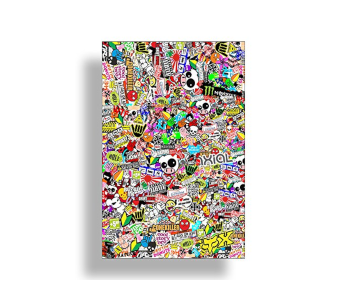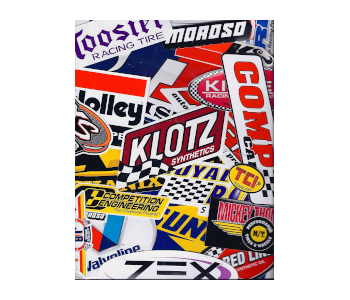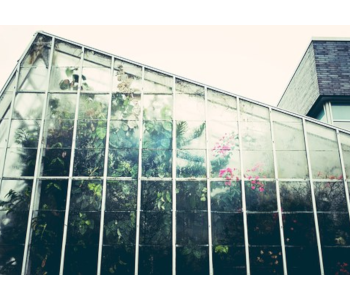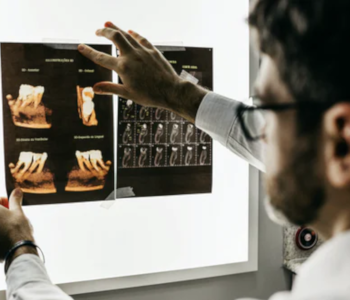Best Uses for Flexible Plastic Sheets
An important reason why plastic has long endured as a building block of the modern manufacturing industry is its sheer versatility. By working plastic into different forms, it can have different physical properties that make it suitable for diverse applications.
One form factor in which plastics are commonly used is flexible sheets. These are wide sheets of plastic that are deliberately rolled thin to have good flexibility while maintaining an acceptable level of strength. Which types of plastic are used as flexible sheets and how are they used?
Arts and crafts

One does need to look into industrial-scale applications to realize just how useful plastic sheets can be. If you like doing arts and crafts projects at home, then you might already be using flexible plastic sheets.
The most common example of this is printable films made of PPC (polypropylene carbonate). These can be printed on using standard inkjet printers and are a great and easy way to make signs, greeting cards, documents, and other promotional materials. PPC films can be manufactured clear or matte for unique aesthetic appeal.
Mylar films are often used to provide a protective layer for artwork preservation. Mylar is a polyester film that has been trademarked by Dupont. It exhibits excellent heat and chemical resistance, does not tear easily, and does not turn yellow over time.
A useful property of flexible plastic sheets is that they can readily take up an adhesive. This makes it easy to make instant stickers using double-sided adhesive films. Making custom stickers isn’t just useful for art projects – it can also be an incredibly fun activity for kids.
Speaking of fun, one of the most engaging art activities is to make design pieces made of shrink film. Typically made of PVC, shrink films shrink when exposed to high temperatures. This makes any printed or drawn pieces look better on account of more intense colors and better resolution.
Automotive applications

Flexible plastic sheets are found almost everywhere in cars. They aren’t just aesthetics – plastic sheets are also functional.
There is a wide range of different types of flexible plastic sheets used in the automotive industry. Polyolefins like HDPE and PP are used to coat or laminate different car parts. They have good electrical properties, resist distortion when exposed to high temperatures, and have excellent chemical resistance. PP sheets are typically used to coat gauges because of their contact clarity. Polyolefins are robust and easy to manipulate, allowing for easy application on surfaces with complex geometries.
Aesthetics, of course, is an important thing when it comes to cars. Many of the trimmings and embellishments typically seen in cars are applied using flexible plastic sheets. There are several different ways that this can be done. Plastic sheets can be printed on or have metallic films to create a more “reflective” look.
Laser-cut plastic sheets have gained popularity among car enthusiasts. With laser cutting technology, laminated plastic sheets can have highly intricate designs that would have been difficult to replicate manually. Just about every digital design can be reproduced via a laser cutting machine and the appropriate CNC program. Laser cutting is a very fast process that can even cut through multiple plastic sheets simultaneously.
Greenhouses

Greenhouses are a very traditional way of using flexible plastic sheets. While many greenhouses nowadays already use rigid polycarbonate walls, most of them still prefer the practicality of using flexible sheets, which are cheaper and can be readily removed.
Why is plastic the material of choice for greenhouses? Compared to glass, plastic has better insulating properties and allows for better heat retention. More translucent plastic sheets are often used in glasshouses, precisely because they tend to scatter sunlight more. This results in more even heating inside the greenhouse. There are even versions of plastic sheets that have been deliberately inundated with air bubbles to enhance the material’s diffusive capability.
Of course, it also helps that plastic sheets are a lot cheaper than glass. Not only is the material in itself expensive, but draping plastic sheets and cutting them down to the proper size requires much less work. When made thick enough, flexible plastic sheets are durable and robust enough to withstand outdoor conditions even across all four seasons.
Given the economics and benefits, using plastic sheets for greenhouses has endured through the decades. Most flexible plastic sheets manufactured nowadays are meant to last more than ten years and can be recycled year to year.
Decorative sheets

Flexible plastic sheets do not need to be transparent or translucent. In interior decorating, printed PVC sheets have provided a convenient way to add visual flair to any space. PVC sheets are durable, customizable, inexpensive, and easy to apply.
PVC sheets are incredibly versatile. They can be printed with patterns that simulate more traditional architectural materials such as wood, leather, or marble. They can even be laminated in a manner that gives them texture, giving the PVC sheets a tactile premium.
PVC is a naturally strong plastic that can resist damage from abrasion and scratches. Some manufacturers even enhance their PVC sheets by adding anti-UV, fire-retardant, or flexibility-enhancing compounds.
For clear glass interiors, a thin layer of flexible PVC sheet can help give a frosted appearance. This is perfect for private offices, conference rooms, or showers.
PVC sheets have been used as a substitute for traditional tiles or wallpaper. They come in pre-cut portions that make them very DIY-friendly. Being inexpensive and less permanent than tiles, PVC sheets are perfect for homeowners who like redesigning their homes every few years.
Medical and dental applications

In the field of healthcare, flexible plastic sheets are everywhere. They are overlaid on X-rays to protect the image while allowing doctors to make plots and annotations. PVC sheets are also used to line hospital beds and pillows because they are easier to replace and wash. Flexible acrylic sheets are used to make PPEs such as face shields and protective eyewear.
Plastic has a couple of characteristics that make it useful in the medical industry. They are tough enough to withstand sustained use, can conform to complex geometries, can withstand the temperatures needed for autoclaving, provide an effective barrier against moisture and bodily fluids, and can be easily washed and reused.
As you would expect, a flexible plastic sheet will need to comply with a higher set of standards to be suitable for use in a medical environment. This may include treatment with a fire-retardant compound or a certification that the plastic is free from phthalates. Even with strict standards, a wide range of plastics has been used for decades in the medical industry. These include acetate, PETG, PEEK, PVC, and polycarbonate among a few dozen others.
Final thoughts
As we have covered in a previous article, flexible plastic sheets can be composed of several different plastic types and enhanced with a wide range of additives. This has made them quite valuable in many industries. Not only are plastic sheets versatile, but they also have excellent workability and are very inexpensive.
Flexible plastic sheets can be printed on, conform to any geometry, and withstand extreme conditions. Combine this with properties enhanced by additives and you have yet another form of plastic that will unquestionably remain relevant for the years to come. We only hope that the time comes when plastic alternatives can equal the utility of real plastic.


Are PPC sheets (as used for overhead projectors and laser printers) good material for cutting with a typical Makerspace laser cutter setup? I know that PVC is to be avoided because of the acid created while cutting, but I have not found anything about PPC (be it hazardous or for creating plastic goo).